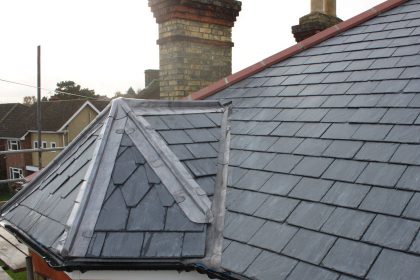 The History of Roofing Construction
The History of Roofing Construction
When you come down to it, all a house really needs are walls, a roof and an opening to go in and out. Even the floor can be simply the bare earth. A roof fulfils many functions. It keeps out undesirable weather, from rain, wind and cold to excessive heat. But more than that, it makes us feel safe in our own homes. Read the history of roofing and how far we’ve developed.
History of Roofing – Early Roofs
The earliest known roof was a mammoth skin stretched over a shelter built around 40,000 years ago. Various types of animal skin were used in prehistory, though sometimes leaves, turf or wood were preferred.
Clay tiles were first used in China at least 5,000 years ago, and in Europe by the Greeks and Romans. It was the Romans who introduced them to Britain, along with much of the rest of the continent.
The shape of roofs has always depended largely on the climate. Rounded or pitched roofs have always been necessary for drainage when rainfall is common, which is why flat roofs were rare in Britain until recent times. However, in drier countries, such as many Mediterranean lands, flat roofs are much more common.
The Development of Roofing
Although buildings in Roman Britain were commonly tiled, with either clay tiles or slates, the Anglo-Saxons tended to prefer thatch. It’s a beautiful material (who doesn’t love seeing a thatched cottage in a village?) but it tended to catch fire. Because of this, it began to be replaced by clay tiles during the medieval period.
Tiled roofs gradually became standard throughout much of Europe, with slate and even wooden tiles used as well as clay. Other materials, such as sheet metal, have been rare until recently. Copper and zinc were occasionally used throughout the world on special buildings, with even gold roofs occasionally rumoured, but they’ve only become common in the past century.
Roofing Today
With the development of asphalt roofing in the 20th century, flat roofs have become more common in Britain, especially as buildings began to stretch upwards. Various strategies to solve the drainage problem now make this a viable option, even in the British climate.
Nevertheless, pitched roofs of clay or slate tiles remain the overwhelming favourite in Britain, as well as throughout much of Europe and North America, with asphalt and metal as alternatives.
Roofing has come a long way since the days of mammoth skin, but its function is still the same — to keep us safe and comfortable in our homes. You’re very welcome to get in touch if you need more safety or comfort.
Read our previous blog post here.
”
{
“”@context””: “”https://schema.org””,
“”@type””: “”BlogPosting””,
“”mainEntityOfPage””: {
“”@type””: “”WebPage””,
“”@id””: “”https://empireupvcandroofing.co.uk/news/the-history-of-roofing-construction””
},
“”headline””: “”The History of Roofing Construction | Empire UPVC & Roofing””,
“”description””: “”Explore the history of roofing construction on the Empire’s blog. If you have any questions, please don’t hesitate to get in touch with us!””,
“”image””: “”https://empireupvcandroofing.co.uk/wp-content/uploads/2020/06/featured-the-history-of-roofing-construction-420×280.jpg””,
“”author””: {
“”@type””: “”Organization””,
“”name””: “”Empire Roofing””
},
“”publisher””: {
“”@type””: “”Organization””,
“”name””: “”Empire Roofing””,
“”logo””: {
“”@type””: “”ImageObject””,
“”url””: “”https://empireupvcandroofing.co.uk/wp-content/themes/empire/images/logo.svg””
}
},
“”datePublished””: “”2019-07-30″”,
“”dateModified””: “”2021-05-25″”
}
“









